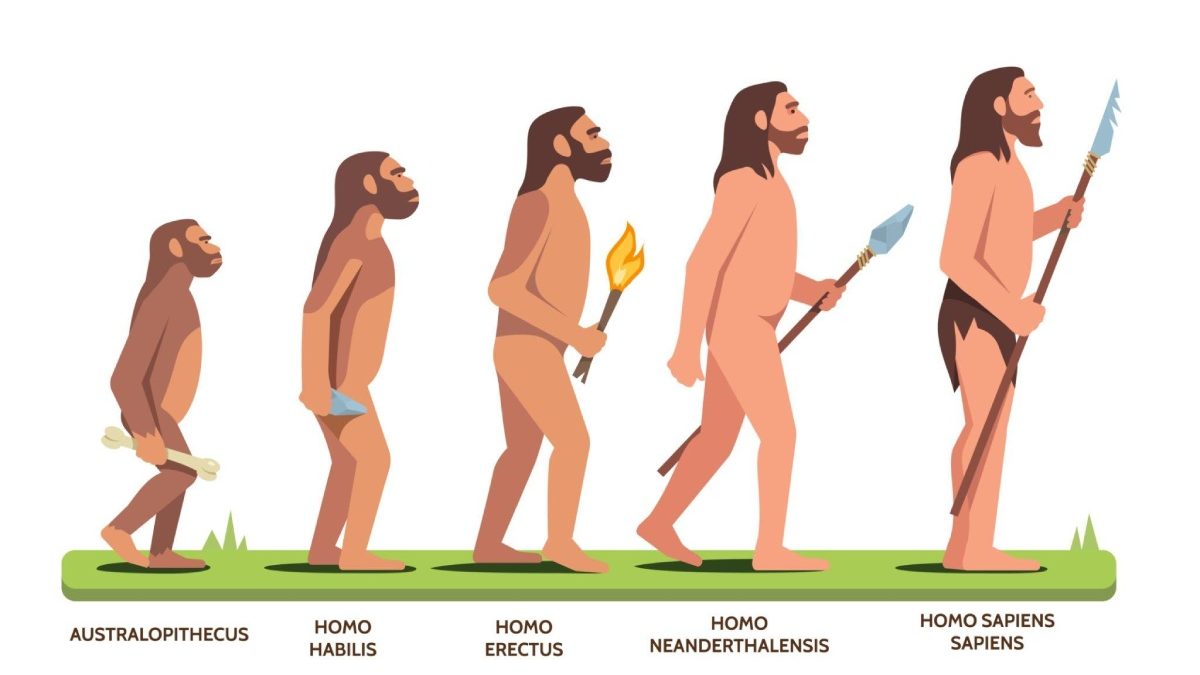When was Walking Invented – Walking is such a simple thing that we take for granted. But have you ever wondered who invented walking and how they came up with the idea?
The first person to walk on two legs was probably a chimpanzee. But the first person to walk upright, as we do, was a Homo erectus named Turkana Boy. He lived in Africa about 1.6 million years ago.
Turkana Boy’s bones show that he walked upright, but we don’t know if he did it all the time or just some of the time.
If he had done it all the time, it would have been a significant advantage for him. He could carry things with his hands, and he would have had better balance and a better view of his surroundings.
The first person to walk upright all the time was Homo sapiens, who appeared about 200,000 years ago.
We don’t know why they started doing it, but it might have been because they wanted to save energy. Walking on two legs is more efficient than walking on all fours.
So there you have it! The next time you go for a way of walking, think about the long history of walking and how it has helped us survive and thrive as a species.
Table of Contents
Why did humans start walking? When was Walking Invented
When was Walking Invented – Although there is no universally accepted explanation, scientists have developed several hypotheses. One answer comes from a 2012 study on chimpanzees in the Republic of Guinea published in Current Biology. Could an oil palm nuts were offered to the chimpanzees as food options?
Despite living in a region with many oil palm trees, they preferred cola nuts. The chimpanzees were four times more likely to leave on their two back limbs after receiving cola nuts. The researchers concluded that walking upright was the most practical method and that the chimpanzees moved on to other locations to avoid competition.
Who Invented Walking, And How Did He Get The Idea?
According to legend, on March 23, 1426, Albert Ignatius Osselwalker was riding a horse when it tripped and collapsed, depositing him into a sizable area of stinging nettles. Reacting to the excellent burning pain he was feeling in his genitalia, he sprung to his feet and yelled, “Ow me bloody Arse!”
The first human step was taken when a person stood on two bases for the first time in recorded history. He then lost his balance while rubbing his behind and put a foot forward to stop himself from falling.
When was Walking Invented
When it became clear that this new-fangled “walking” thing could be done without the aid of Stinging nettles, onlookers who were crawling along the road on all fours were even more amazed, and before you could about “I’ll go to the foot of our steps,” they were all at the bottom of the stairs.
When the Amalgamated Union of Horses, Donkeys, and Other Equine Beats of Burden engaged in industrial action and conducted a sit-down strike, the mania took a slight backward step, but this was quickly addressed.
12 Benefits of Walking -When was Walking Invented
When was Walking Invented? It’s unpaid. It is simple to perform and gentle on the joints. And there is no denying the health benefits of walking. When was Walking Invented – According to research from the University of Tennessee, women who walked had lower body fat levels than those who didn’t. Since the calf functions as a venous pump, contracting and pumping blood from the feet and legs back to the heart, lowering the burden on the heart, it also reduces the risk of blood clots. Walking is beneficial to your health in various ways and is a simple cardiovascular activity.
The Benefits of Walking
1. improve Circulation
Heart disease can be prevented by walking, increasing heart rate, decreasing blood pressure, and strengthening the heart. In just 24 weeks, post-menopausal women can drop their blood pressure by roughly 11 points by walking just one to two kilometres daily. When was Walking Invented – According to investigators at the Harvard School of Public Health in Boston, women who walk for 30 minutes a day can lower their risk of stroke by 20% and by 40% when they pick up the pace.
2. Shore Up Your Bones
Michael A. Schwartz, MD, of Plancher Orthopedics & Sports Medicine in New York, claims that walking can prevent people living with osteoporosis from losing bone mass. A post-menopausal women’s risk of hip fracture was shown to be decreased by 40% with 30 minutes of daily walking, according to one study.
3. Enjoy a Longer Life – When was Walking Invented
According to research, those in their fifties and sixties who routinely exercise have a 35% lower eight-year mortality rate than those who don’t exercise. That percentage jumps to 45% less likely for people with underlying medical issues.
4. Lighten Your Mood

One of the psychological advantages of exercise is the release of endorphins, naturally occurring painkillers. A study from California State University, Long Beach, found that people’s emotions improved with the number of steps they took each day.
5. lose weight
When was Walking Invented – Walking briskly for 30 minutes burns 200 calories. Burning calories can cause weight loss over time.
6. Strengthen Muscles
Walking strengthens your leg, stomach, and, if you pump your arms, even arm muscles. Extending your range of motion puts less strain on your joints and more weight on your strengths.
7. Improve Sleep
According to studies, women between 50 and 75 who went for an hour-long morning stroll were more likely to have sleep relief than those who didn’t.
8. Support Your Joints
When was Walking Invented – Most of the cartilage in joints receives no direct blood flow. It receives nourishment from the joint fluid that moves around as we progress. Walking causes the cartilage to move and compress, allowing oxygen and nutrients to enter the area.
9. Improve Your Breathing
When was Walking Invented – When you walk, your breathing rate quickens, encouraging oxygen to go through the bloodstream more quickly, aiding in removing waste products and boosting energy and healing capacity.
10. Prevention of Mental Decline
Investigators at the Campus of California San Francisco discovered that older women who walked more experienced less age-related memory loss in a study of 6,000 women aged 65 and older. Compared to women who walked less than a half-mile per week, those who walked 2.5 miles per day saw a 17% drop in the recall.
11. Lessen Your Risk of Alzheimer’s
Rendering to a study from the University of Virginia Health System in Charlottesville, dementia and Alzheimer’s disease were twice as common in males between the ages of 71 and 93 who walk more than a quarter of a mile daily than in those who did not.
12. Do more and for longer.
When was Walking Invented – According to a study recently published in the Journal of Clinical Outcomes Management, strength training and aerobic walking programmes may lessen the prevalence of disability in daily living activities for adults over 65 with symptomatic OA.
Walk With Ease in the Worksite
When was Walking Invented – The Walk With Comfort in the Worksite program is a low-fee, 6-week walking program that can easily be included in an organisation’s health software or offers a great place to begin for a brand-new well-being application. Walk With Ease is the handiest on-foot application diagnosed as arthritis-suitable and proof-based totally by the Centers for Disease Control and Prevention. Walk With Ease has been proven potent in increasing stability, lowering pain, and enhancing mental fitness, flexibility and average physical health. Employers can use this packaged software to train, incentivize, encourage and help improve the average great of life for their personnel.
When was Walking Invented – Consider your method
Turning your regular walk into a healthy stride calls for proper posture and functional moves. Ideally, here’s how you may want appearance whilst you’re taking walks:
- Your head is up. You’re searching forward, not on the floor.
- Your neck, shoulders and returned are secure, now not stiffly upright.
- You’re swinging your hands-free with a mild bend for your elbows. A little pumping together with your palms is OK.
- Your stomach muscle tissues are barely tightened, and your return is immediately, no longer curved forward or backwards.
- Quickly rolling your foot from heel to toe, you walk.

When was Walking Invented – Plan your ordinary
As you begin your strolling habitual, keep in mind to:
Get the right equipment. Choose footwear with the right arch help, a firm heel and thick flexible soles to cushion your ft and absorb surprise.
Wear relaxed, free-fitting garments and tools appropriate for all weather varieties, including layers in cooler weather. Aim to wear moisture-wicking fabrics allowing you to relax more. Wear brilliant colourations or reflective tape for visibility if you stroll outside while it’s dark. Wear sunscreen, a hat and shades in case you’re going out for the day.
When was Walking Invented?
Some human beings pick to use an activity tracker, app or pedometer. These can be useful for tracking your time, distance, coronary heart charge and calories.
Choose your direction carefully. Avoid paths with cracked sidewalks, potholes, low-striking limbs or choppy turf if you are walking exterior.
If the weather isn’t appropriate for strolling, recall walking in a shopping centre that gives open instances for walkers.
Warm-up. Stroll for five to ten mins to warm up your muscle groups and put together your body for exercise.
Cool down. At the cease of your stroll, stroll for 5 to 10 mins to assist your muscle mass to calm down.
Stretch. After you settle down, gently stretch your muscle tissue. If you’d alternatively try earlier than you stroll, consider warming up first.
When was Walking Invented – Set sensible goals
For most wholesome adults, the Department of Health and Human Services recommends those exercising suggestions:
Aerobic hobby. Get at least 150 minutes of slight aerobic amusement or 75 mins of vigorous aerobic pastime a week, or an aggregate of mild and lively activity. The pointers recommend that you unfold this exercise for the duration of the route of a week. More significant quantities of exercising will offer even more incredible health blessings. But even small amounts of physical pastime are helpful. Being active for brief durations at some point of the day can upload as much as it offers fitness benefits.
Moreover, strength education. Do electricity training physical activities for all top muscle companies at least twice a week. The goal is to do a solitary set of each exercise, using a weight or resistance level weighty enough to tire your muscular tissues after about 12 to fifteen repetitions.
As a fashionable goal, the purpose is for a minimum of 30 minutes of bodily interest a day. If you cannot set aside that much time, try numerous short periods of activity during the day. Any quantity of pastime is better than none in any respect. Even small amounts of bodily interest are helpful, and amassed daily activity adds up to provide health gain.
When was Walking Invented?
Remember, it’s OK to begin slowly — especially if you have not often been exercising. You might start with five mins an afternoon the primary week, then grow some time using 5 minutes every week until you reach at least half-hour.
For even extra health blessings, the goal for at least 60 mins of physical activity full days of the week.
Track your development
Firstly, Keeping a file of how many steps you are taking, the gap you stroll and how long it takes assists you to serve as a reminder of where you came from and a source of. Just think how right you may feel while seeing how many miles you’ve walked every week, month or year.
Try using a pastime tracker, app or pedometer to calculate steps and distance. Or document these numbers in a foot magazine.
Stay inspired – When was Walking Invented
When was Walking Invented?
Starting a walking software takes the initiative. Sticking with it takes dedication. To stay stimulated:
- Set yourself up for success. Start with a simple aim and, “I’ll take a five- or 10-minute walk during my lunch ruin.” When your five- or 10-minute stroll becomes an addiction, set a brand new intention: “I’ll walk for 20 minutes after paintings.”
However, find unique instances for walks. Soon you can be attaining desires that after appeared not possible.
- Make on foot exciting. If you dislike strolling alone, ask a chum or neighbour to sign up for you. If you’re energized with the aid of agencies, join a gymnasium or walking organization. You may like listening to songs even as you stroll.
- Vary your recurring. If you stroll the exterior, plan several one-of-a-kind routes for variety. If you often walk in your neighbourhood, remember on foot somewhere new, inclusive of a city or national gardens. Try taking ways with hills or stairs as you grow to be used to walking extra. Or walk faster for a few minutes,, gradually down for a few minutes and repeat the cycle. If you are walking on your own, tell a person which course you are taking. Walk in secure, nicely-lit locations.
- Take overlooked days in stride. If you find yourself skipping you everyday walks, don’t surrender. Remind yourself how correct your experience whilst you include physical interest in your everyday routine, and then get back on target.
Once you take that first step, you are on the way to a crucial vacation spot — better fitness.
Conclusion
When was Walking Invented – Walking is a simple thing we take for granted. But have you ever wondered who invented walking and how they came up with the idea?
The first person to walk on two legs was probably a chimpanzee. But the first person to walk upright, as we do, was a Homo erectus named Turkana Boy. He lived in Africa about 1.6 million years ago.
Turkana Boy’s bones show that he walked upright, but we don’t know if he did it all the time or just some of the time. However, If you have any queries regarding this post so, please Comment to us, or you can contact us at our official email please find on contact us below.


